In green building, hedges are called linear plantings of shrubs or trees. Plant walls and fences are not only picturesque - they protect the site from prying eyes, uninvited guests, winds, noise and dust.In addition, natural hedges can successfully camouflage outbuildings, aesthetically divide the garden area into different zones and at the same time serve as a certain backdrop for landscape compositions.
Hedges made of woody plants: how they differ
Hedges are created from low-growing trees, various types of ornamental shrubs, and less often from perennial herbaceous plants on trellises.
Height and width
Green fences are conventionally divided by height into three groups:
- walls – more than 3 meters high,
- the actual hedges (low, medium, high) – from 0.5 to 3 meters,
- curbs – up to 0.5 m.
Each of these groups has its own assortment of plants. Thus, tree crops with a vertically directed crown are suitable for living walls, while dwarf forms are used for borders.
The height of the fence, designed for visual isolation from prying eyes, must be at least 2 meters. When choosing the height of a living fence, it is necessary to foresee in advance whether the shadow that it will cast on the fenced area and, possibly, on the neighbor’s garden will cause unwanted problems. In order to delimit the internal space of the garden area, hedges no more than 1.5 meters high are planted.
The width of the living border depends on the number of rows of plants in it. Plantings can be one-, two-, three-row. Moreover, the rows can be from one type of plant or from different ones; both identical in height and differing in this parameter.
Some trees and shrubs begin to become bare underneath over time as a result of the natural death of lower branches. Taking this into account, the “legs” of such plants are immediately covered with a row of lower, stably ornamental shrubs when planting.So, a row of lilacs with a line of spireas planted in front of it will look impressive.
Form
Hedges can be trimmed (shaped) or untrimmed (free-growing).
A molded hedge has regular geometric contours (parallelepiped, trapezoid, sphere, hemisphere), which are obtained as a result of regular pruning. Clipped hedges, in addition to straight ones, can be wavy and zigzag. The top surface also does not have to be strictly horizontal. It all depends on the owner’s imagination, design idea and the skill of the garden “hairdresser”.
Most beautiful flowering shrubs are not suitable for trimmed hedges, since shaping prevents them from flowering. The “building material” of a living “geometric” fence is most often tree and shrub crops with good branching and small decorative leaves. The smaller the leaves or needles, the denser the texture of the trimmed surface, and the more impressive the living barrier looks. A small nuance is that, for all its “beauty,” the molded hedge is quite monotonous and will require playing with flower beds, contrasting companion plants or small garden forms.
For free-growing hedges, choose plants with a compact crown - decorative foliage, beautifully flowering, beautifully fruiting.
Attention! Unshaped hedges will definitely need pruning, too, but these will be stimulating, corrective, sanitary trims without giving the bushes a clear shape.
Color
Thanks to the wide range of tree and shrub crops, there are now many more color options for hedges than just using the usual green color.Using plants with different colors of leaves or needles, you can plant golden-yellow, silver, purple, or fences combined from different colors on your site.
Important! Colored hedges on the site are a powerful accent. They themselves become an element of landscape design and it is much more difficult to fit them harmoniously, unlike monotonously green ones, into the overall holistic picture of the garden.
«Colored hedges on the site allow you to play with the illusion of perceiving objects. A barrier of warm-colored trees or shrubs (such as purple-leaved barberry) appears closer than it actually is. The use of cold shades (for example, thuja with bluish needles), on the contrary, visually distances it.
You can visually lengthen a garden path (and, therefore, increase the size of a small garden) by starting a double-sided border of varieties with dark flowers of any type of plant and ending with varieties with light colors. To create this effect, for example, paniculate hydrangea with its wide color palette is suitable.
An interesting design innovation is the creation of heterogeneous (“marble”) hedges. For example, an original variegated fence can be obtained by planting in three rows mixed seedlings of two (or three) differently colored varieties of common barberry. After some time, the branches of closely planted plants penetrate each other’s crowns, and then emerge on the surface of the fence in different places. The appearance of a trimmed, intricately spotted living fence is very impressive.
The use of colored plants in a hedge requires a developed sense of proportion.A low fence made from the purple-leaved form of common barberry looks exclusive, but high dark purple walls made from Ottawa barberry Superba will make a gloomy, depressing impression.
A hedge on your property
When choosing shrubs for hedges, it is important to decide what main function should be performed by the living fence of the local area:
- To weaken the winds while maintaining ventilation of the area, a loose hedge of deciduous crops (amorpha, dogwood, hawthorn, etc.) is preferable.
Important! A screen fence should catch and partially transmit the wind, rather than reflect it completely. An impenetrable planting is almost no different from the wall of a stone or metal fence. The wind speed when passing over the top of a too dense strip (it does not penetrate through it) is reduced by half, but immediately behind the fence the air currents begin to swirl. This phenomenon has a bad effect on the well-being of nearby plants.
- The best screen from street dust is conifers and trees and shrubs with wrinkled and pubescent leaves (willow, rough elm, field maple, etc.)
- Sounds are most effectively absorbed by coniferous trees and, above all, pine and spruce.
- A reliable barrier from uninvited visitors - people or animals - is a thorny obstacle made of common barberry, prickly rose, large-thorned hawthorn, and European gooseberry.
- To create green “rooms” and secluded corners inside the garden, decorative low-growing shrubs are suitable - spirea (Japanese, Boumalda, etc.), privet, low-growing varieties of western thuja, etc.
Attention! Low-growing, so-called dwarf, varieties of both deciduous and coniferous trees grow very slowly (annual growth does not exceed 15 cm).
As a rule, the greatest aesthetic value is represented by mature, well-developed specimens, the cost of which in the nursery is much higher. Therefore, when purchasing planting material to create a border from “dwarfs,” you will have to take into account its high cost.
The durability of green spaces (and living fences are a special case of them) is sharply reduced if the atmosphere in the area where they grow is polluted with dust, gases and the water-air regime of the soil is disturbed due to the hard surface.
Fast-growing shrubs for hedges
To create a perennial hedge, they try to use fast-growing shrubs so that they show their protective and decorative properties as early as possible. The favorite “building materials” for fences made of deciduous shrubs in central Russia are:
- barberry,
- privet,
- cotoneaster,
- bladderwort viburnum,
- chokeberry,
- hawthorn,
- derain,
- bloodroot,
- spirea,
- golden and alpine currants,
- forsythia.
The annual growth of shoots for many of them is up to 1 meter.
For single-row planting, 2 to 5 seedlings are planted per meter of border strip, taking into account the diameter of the crown of an adult plant.
Already from an early “youth”, the hedge should acquire a dense foundation. Heavy pruning of the bush stimulates the appearance of side shoots. For seedlings planted in autumn, all shoots are shortened by one third of their length in the spring of next year. When planting hedges in spring, plants are given the opportunity to grow the above-ground part during the season for the subsequent formation of good roots. Pruning is then done the following spring.The gardener's scissors will be needed 2-4 times during each season, depending on the type of plant.
Bladderwort viburnum
One of the popular types of ornamental fast-growing shrubs used in the construction of hedges is viburnum-leaved bladderwort (Physocarpos opulifolius).
All parts of this shrub - flowers, leaves, and fruits - are of decorative value. The bush is up to 2-3 meters high - spreading, with a dense hemispherical crown. The small leaves have serrate-toothed edges. Small flowers with red stamens, collected in white or pink umbrellas, bloom in June. Collectible bubble fruits change color from green to reddish when ripe. In garden design, the following varieties of viburnum are most often used:
- Dart's Gold (Darts Gold) - with lemon-yellow leaves,
- Diabolo (Diabolo) - with purple foliage,
- Luteus (Luteus) – yellow-orange in spring, green in summer and golden in autumn,
- Red Baron (Red Baron) - with dark red leaves.
For borders, dwarf varieties of bladderwort such as Nana (Nana) with dark green leaves and a bush height of up to 1 m are used.
Bladderwort tolerates partial shade, but varieties with golden and purple leaves prefer sunny places to maintain rich color. Does not like waterlogged soil. The undoubted advantages of this shrub include:
- frost resistance,
- undemanding to soil fertility,
- good tolerance to polluted environments.
The high unpretentiousness of the bladderwort allows it to be planted as undergrowth even along roads and railways.
Cotoneaster brilliant
Cotoneaster brilliant (Cotoneaster lucidus) - one of the best deciduous shrubs for creating dense, trimmed hedges. The cotoneaster bush is erect, densely leafy, up to 2 meters high. Glossy dark green elliptical leaves turn purple in autumn. Thanks to the abundance of black fruit balls on the branches, cotoneaster remains picturesque for a long time even against the dull background of late autumn.
The value of brilliant cotoneaster for landscaping is that it:
- winter-hardy,
- drought-resistant,
- unpretentious,
- shade-tolerant, although it develops better with sufficient lighting.
The gas and dust resistance of cotoneaster makes it indispensable for fencing if the site is located near a highway or in the city. Cotoneaster is not characterized by rapid growth, but it grows in one place for up to 50 years.
Caragana shrubby
Caragana frutex is one of the most commonly used species in creating green fences.
This variety is very similar to its “sister” - caragana tree, popularly known as yellow acacia. The same abundant “golden” flowering in May, the same thin shoots with light green pinnate leaves creating an openwork crown. The height of the bush is no more than 2 meters, it grows very actively, the powerful root system is capable of strengthening the slope from crumbling soil. Caragana shrub is frost-resistant, hardy, withstands drought, loves the sun, but also tolerates partial shade.
The most popular caragana varieties in garden design are:
- Grandiflor (Grandiflor) – large-flowered variety,
- Latifolia (Latifolia) - large flowers and shiny leaves,
- Globosa (Globoza) – compact spherical crown.
Shrubs for flowering hedges
Hedges made from flowering shrubs are usually not given a clear geometric shape, but are allowed to grow freely. In this case, the distance between bushes in a row should be approximately 0.8 of the diameter of an adult bush. In such a not too dense planting, the crowns of neighboring bushes will only partially overlap.
Ornamental shrubs with a long flowering period are most suitable for creating flowering frames:
- Spiraea Vangutta,
- varieties of Japanese spirea,
- weigela varieties,
- varieties of cinquefoil bush,
- varieties of white dogwood.
Spiraea Wangutta
Spiraea Vanhouttei (Spiraea x vanhouttei) surprises with the size of the bush, lush cascading crown and luxury of snow-white flowering. The height of the bush and the diameter of the crown reach 2 meters. Flexible shoots, strewn with numerous hemispherical inflorescences, bend to the ground due to their heaviness. The serrated leaves are also beautiful - dark green on top and bluish below. Spiraea Wangutta is distinguished by its fast growth, unpretentiousness, and shade tolerance. It should be taken into account that such a picturesque border strip will require quite a lot of space.
White dogwood
White dogwood (Cornus alba) is an extremely ornamental shrub, very promising in green construction in central and northern Russia. The second name of this beauty is white svidina, the third is white dogwood, and among the people it is most often known as redwood. Beautiful foliage, green and white in summer, turns red-violet in autumn. The graphics of flexible reddish-brown shoots are very expressive against the background of white snow and green coniferous trees. It blooms profusely, in two waves - in May-June and August-September. Small white or cream flowers are collected in numerous inflorescences up to 5 cm in diameter.White fruits in late summer are adjacent to newly appearing flowers.
Decorative deciduous varieties of white dogwood are the best for flowering hedges:
- Sibirica Variegata (Sibirika Variegata) - a dense, compact bush, the leaves are decorated with a white edge;
- Spaethii (Shpeta)– the leaves are bordered along the perimeter with a wide golden-yellow stripe, young leaves have a bronze color;
- Aurea(Aurea) - solid gold leaves.
For all their attractiveness, these varieties are resistant to frost and heat, unpretentious, but they fully demonstrate their decorative properties only in good lighting. In order not to turn into an impenetrable overgrown jungle over time, a fence made of such material will require systematic adjustment of height and width, as well as alignment of the planting line.
Evergreen hedges
Evergreen hedges are good because they significantly enliven the boring picture of a winter garden and the colorless period of late autumn. They come from coniferous and deciduous trees.
Mahonia holly
Mahonia aquifolium from the barberry family is a real gift from nature to gardeners and designers. This is a very spectacular evergreen shrub up to 1.5 meters high. Mahonia is called a lily of the valley bush for its aroma of flowers, and holly grapes for its edible blue-gray berries. Large, glossy, toothed leaves, rich green in summer, turn bronze-red in autumn. It blooms in late spring - early summer with fragrant, yellow inflorescences collected in a brush. A border of Mahonia holly leaves remains picturesque all year round.
The undeniable advantage of coniferous trees and shrubs is that they are decorative from the very beginning, durable and enrich the air with the aroma of pine needles and phytoncides. But there are no fast-growing species among them.
A respectable hedge can be planted from spruce (common, prickly, ayan). But there is one significant problem: if for some reason bald patches appear in the crown of these trees, then such holes in the fence will irreparably spoil this status living border.
Numerous varieties of junipers - Virginia, common, Cossack - have proven themselves well as a natural barrier. These are small trees or large shrubs with more active annual growth of shoots. There are columnar and pin-shaped varieties that are suitable for high walls, and there are lower spreading varieties that are good for free-growing hedges.
In the climate of central Russia, well-known varieties of hardy and winter-hardy western thuja (Thuja occidentalis) feel good:
- Brabant (Brabant) – with a conical shape,
- Smaragd (Smaragd) - with a cone-shaped silhouette,
- Sunkist (Sunkist) - with golden needles.
Using the color scheme of modern varieties of thujas and junipers, a natural fence can be made combined - play with shades of green or include blue, yellow, and dove colors.
Miniature (“dwarf”) varieties of thujas and junipers are excellent in borders, but significantly increase the cost of such elegant frames.
If the question is about choosing the most spectacular, unpretentious, easy-to-establish and inexpensive shrubs for a hedge, then here are the six best:
- bladderwort viburnum,
- white turf,
- brilliant cotoneaster,
- spirea,
- shrubby cinquefoil,
- barberry.
A hedge, protecting an area from the outside or decorating it from the inside, really lives - it breathes, grows, blooms, changes, pleases the eye, and creates a favorable microclimate in the garden for both plants and people.
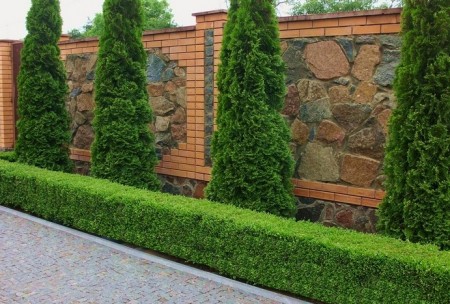
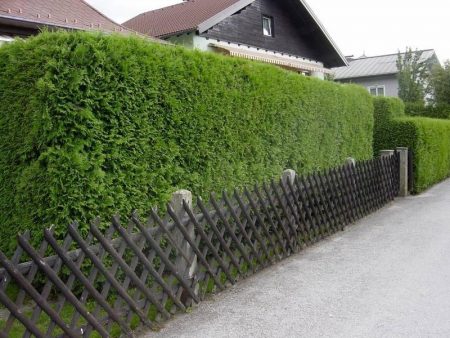
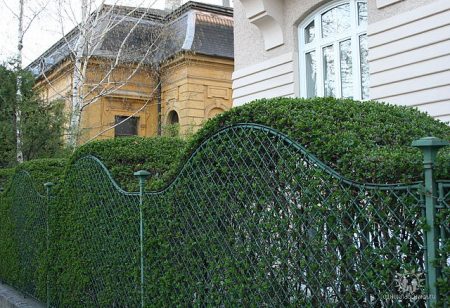
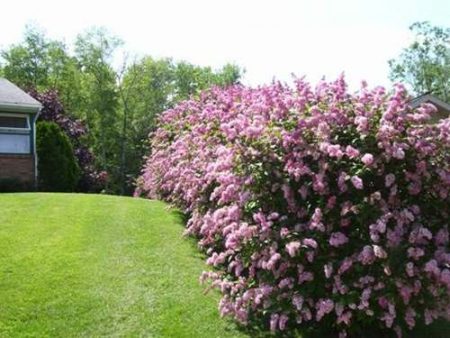
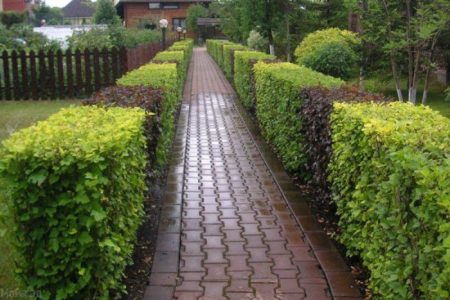
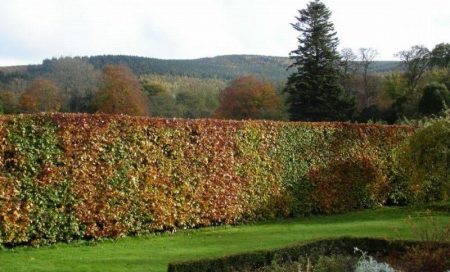
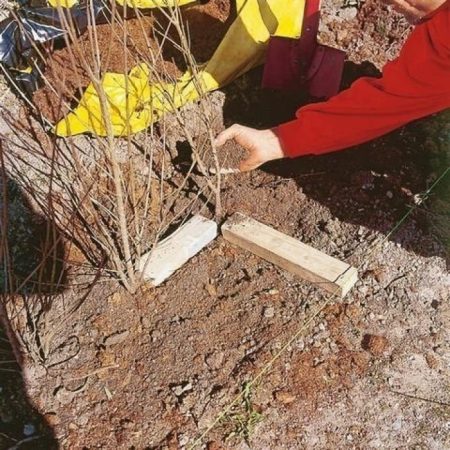
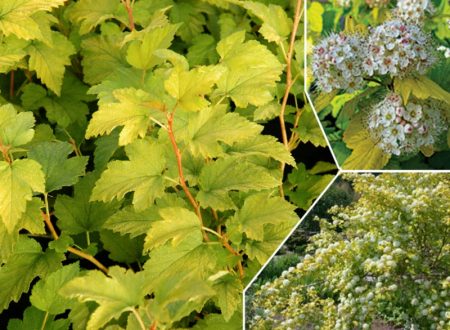
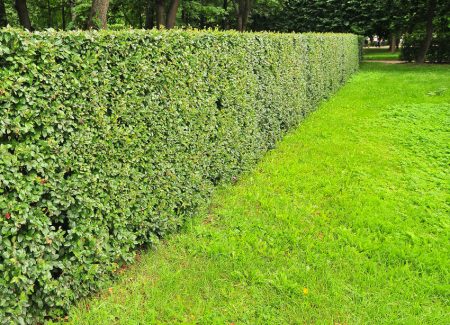
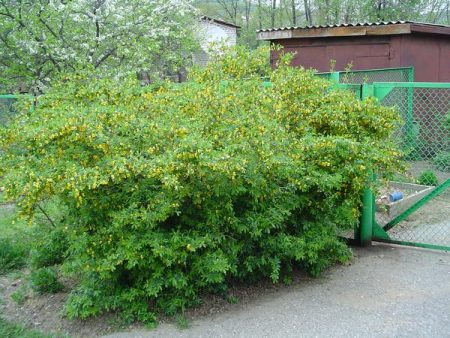
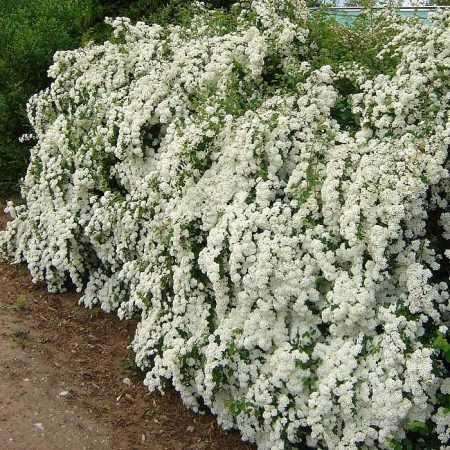
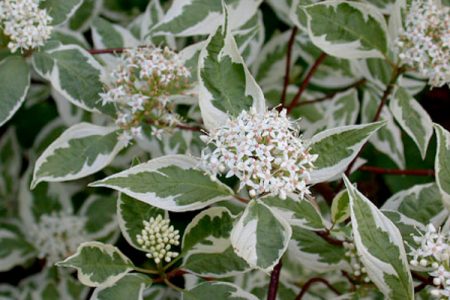
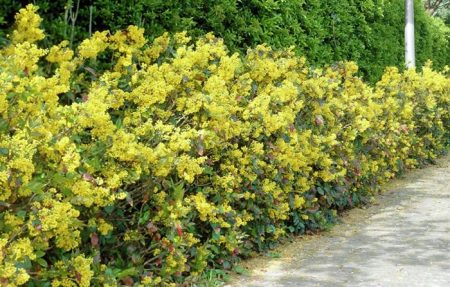
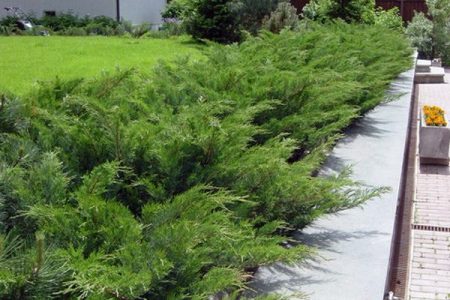
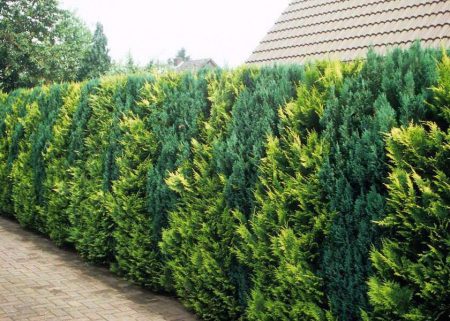

 CUCUMBERS NEVER GET SICK, I'VE BEEN USING ONLY THIS FOR 40 YEARS! I SHARE A SECRET WITH YOU, CUCUMBERS ARE LIKE THE PICTURE!
CUCUMBERS NEVER GET SICK, I'VE BEEN USING ONLY THIS FOR 40 YEARS! I SHARE A SECRET WITH YOU, CUCUMBERS ARE LIKE THE PICTURE! You can dig a bucket of potatoes from each bush. Do you think these are fairy tales? Watch the video
You can dig a bucket of potatoes from each bush. Do you think these are fairy tales? Watch the video
 How our fellow gardeners work in Korea. There is a lot to learn and just fun to watch.
How our fellow gardeners work in Korea. There is a lot to learn and just fun to watch. Eye trainer. The author claims that with daily viewing, vision is restored. They don't charge money for views.
Eye trainer. The author claims that with daily viewing, vision is restored. They don't charge money for views. A 3-ingredient cake recipe in 30 minutes is better than Napoleon. Simple and very tasty.
A 3-ingredient cake recipe in 30 minutes is better than Napoleon. Simple and very tasty. Therapeutic exercises for cervical osteochondrosis. A complete set of exercises.
Therapeutic exercises for cervical osteochondrosis. A complete set of exercises. Which indoor plants match your zodiac sign?
Which indoor plants match your zodiac sign? What about them? Excursion to German dachas.
What about them? Excursion to German dachas.
The article was written by a potato market saleswoman!
Have you even seen plants alive?
The article was written by a landscape designer. And you, Paphnutius, come to us again. It's funny with you.
Very interesting article. Informative and sensible. I have long wanted to know about ornamental shrubs. Thanks for the detailed information.